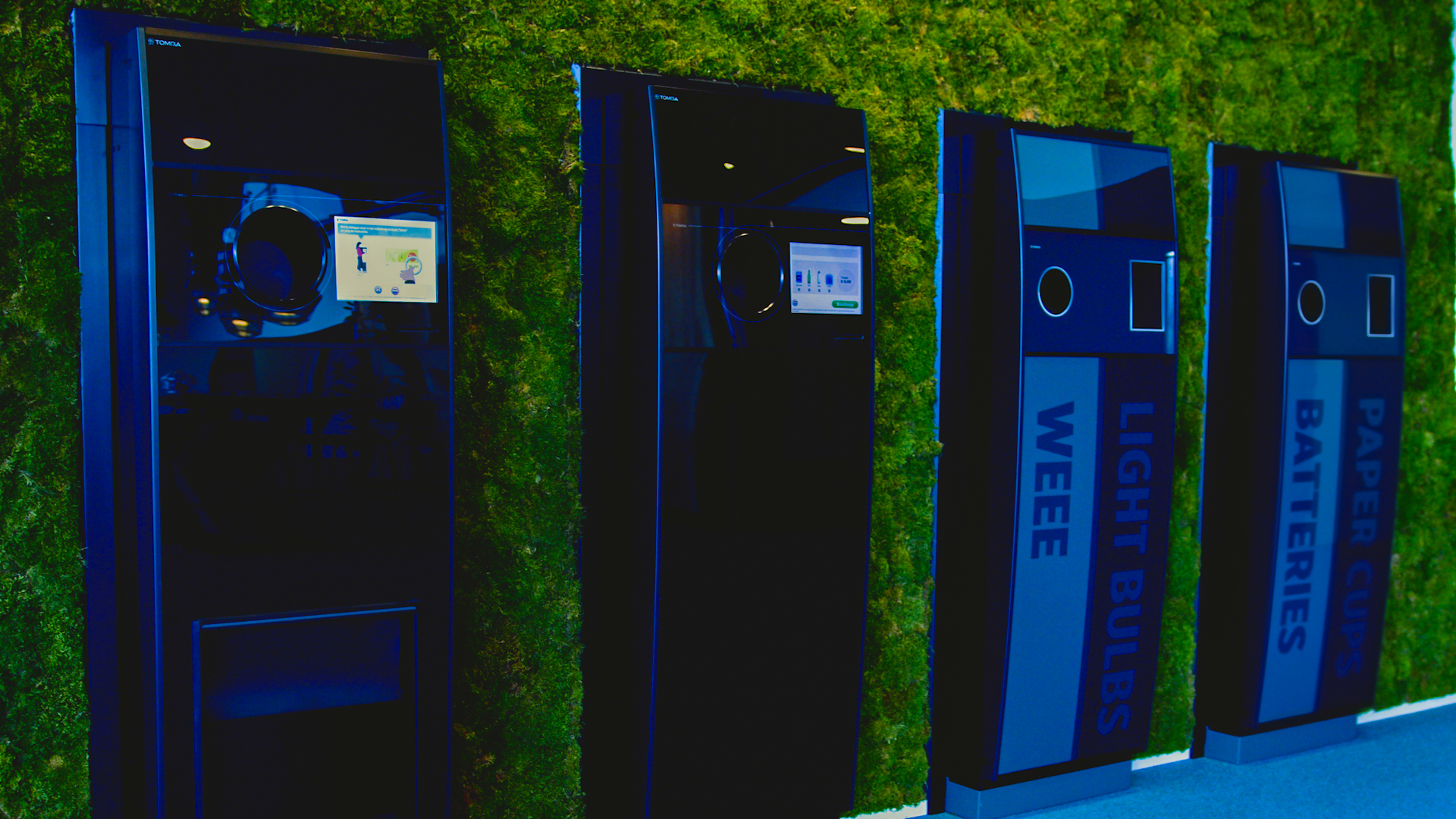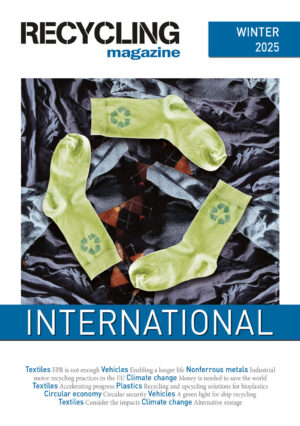Packaging machines play a vital role in recycling, and their operation can be broken down into two main components. The first part is customer-facing, where users can deposit their empty packaging through an opening. Once placed, the machine scans the packaging and transports it via a conveyor system; often a conveyor belt. The scanning technology identifies the type of packaging and calculates the deposit the customer will receive. After entering their items, the customer can press a button to retrieve a receipt for their deposit. Additionally, they have the option to donate their deposit to charity.
The second part of the machine, known as the backroom, is where the actual processing occurs. This area, located behind the customer interface, collects the empty packaging for further handling. Depending on the machine, the packaging may be temporarily stored for transport, sorted by size and material, or compressed to save space. At Tomra’s facility in Apeldoorn, Netherlands, the backroom component is assembled and customised for each client’s specific needs and location. This tailored approach ensures that Tomra’s machines maximise efficiency and adaptability for different environments.
In April 2023, Tomra encountered a significant challenge when the Dutch deposit system expanded to include cans in addition to plastic bottles, with the goal of reducing “street waste”. The new target aimed to collect 90% of all packaging sold, equating to 900 million small PET bottles and 2.5 billion cans annually.
The expansion of the deposit system in the Netherlands required extensive modifications to the existing recycling infrastructure. Key updates were made to the software to enhance the database, and modifications to the equipment behind the packaging machines were necessary to maintain optimal performance. Some retailers addressed the increased volume by compacting PET bottles and cans. However, for those using two Reverse Vending Machines (RVMs) side by side, Tomra’s Z-conveyor system became essential.
The Z-conveyor transports uncompressed beverage containers, like PET bottles and cans, into large storage bags. Initially designed to manage smaller volumes (primarily PET bottles) the Z-conveyor faced challenges with the expanded deposit system, which introduced a much higher volume of cans. The original system was not equipped to handle the surge efficiently, risking potential bottlenecks and operational delays.
Tomra needed to adapt its Z-conveyor for handling increased volumes of both PET bottles and cans seamlessly, to allow retailers to cope with the expanded deposit system without disruption. Tomra consulted Duursma, a Dutch technical. As a long-standing supplier of components for Tomra’s machines, Duursma was well-positioned to address the challenge and sought the assistance of partner Nidec Drives.
To meet Tomra’s needs, the original 1-phase motor of the Z-conveyor was replaced with a 3-phase motor combined with the Control Techniques Commander S Micro AC variable speed drive. The Commander S variable speed drive offers power ratings from 0.18 to 4 kW and a maximum output frequency of 300 Hz, which enabled smooth motor control, and making it possible to switch the conveyor motors on and off in a controlled manner; preventing high starting currents and overheating.
This solution allowed for a direct, 1:1 replacement of the old motor without requiring the entire machine to be returned to the manufacturer. The Commander S variable speed drive’s offline programming capability meant that technicians could arrive on-site with a pre-set configuration, simplifying installation. Once the new motor was mounted, only four parameters required adjustment to get it up and running, offering Tomra an efficient and reliable solution for the conveyor upgrade.
Tomra’s selection of the Commander S variable speed drive wasn’t just about functionality: it aligned with their commitment to sustainability and durability. The Commander S features a sleek, curved design that minimises its carbon footprint while offering easy access to terminal blocks. Its click-on/click-off DIN rail mounting system ensures a straightforward installation process.
One standout feature of the Commander S is its status as the first frequency inverter to come with standard wireless communication via NFC (Near Field Communication). Unlike Bluetooth or WiFi, NFC provides faster, more stable, and energy-efficient connections within a short range (10 cm), ensuring secure communication. NFC is already widely used in smartphones for tasks like payments, making it both a reliable and proven technology.
What truly set the Commander S apart is the Marshal app, which allows technicians to wirelessly commission, monitor, and diagnose the drive. The app simplifies tasks such as copying and transferring settings between controllers. This feature is particularly beneficial when retrofitting a large number of machines, as any Tomra mechanic, regardless of electrical expertise, can easily install and program the Commander S with the help of the app. This combination of durability, innovation, and user-friendly features made the Commander S an ideal solution for Tomra’s operational needs.
Across the Netherlands, the process of replacing the variable speed drives for Tomra’s Z-conveyors with new frequency-controlled 3-phase motors is well underway.











